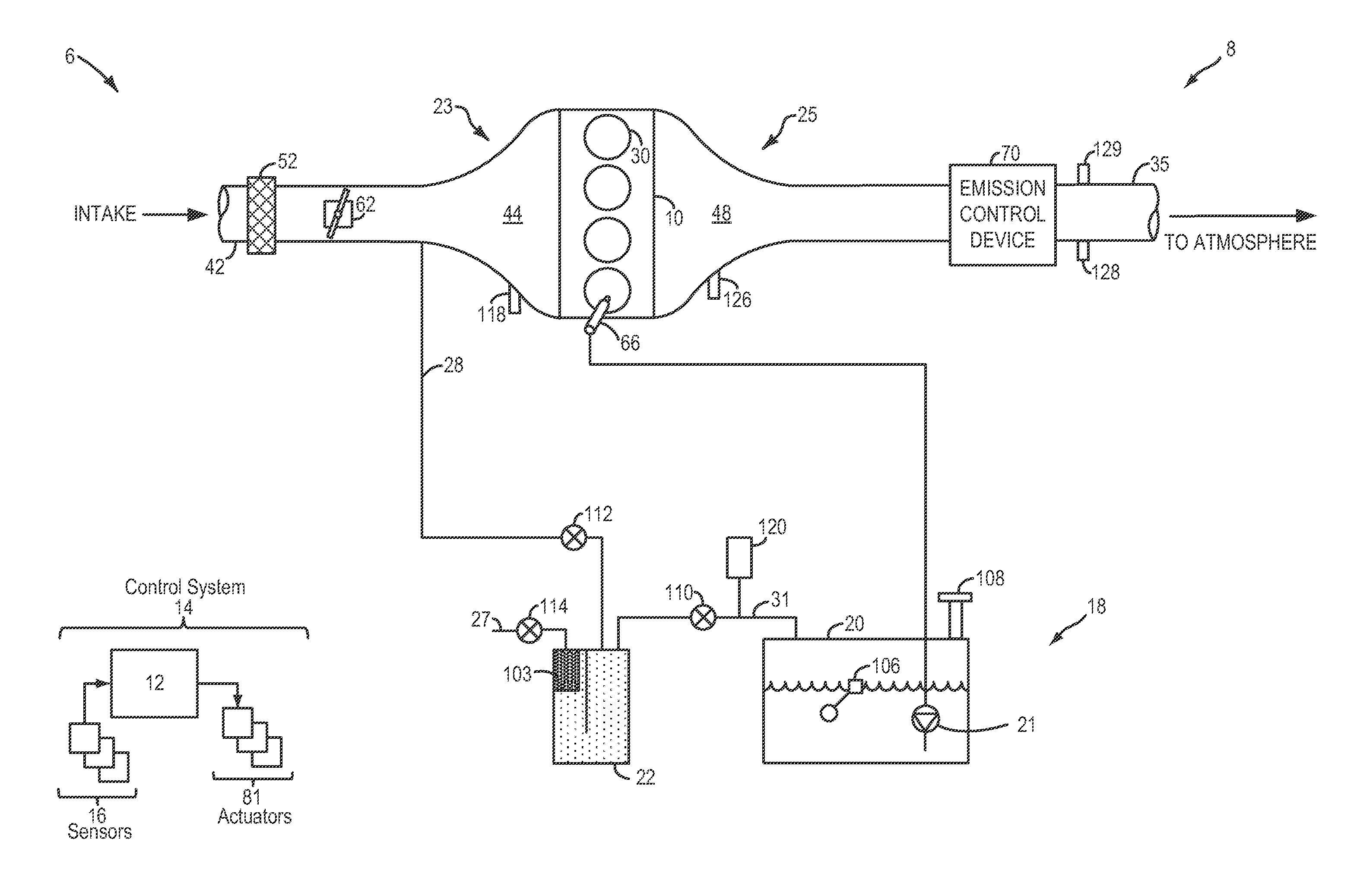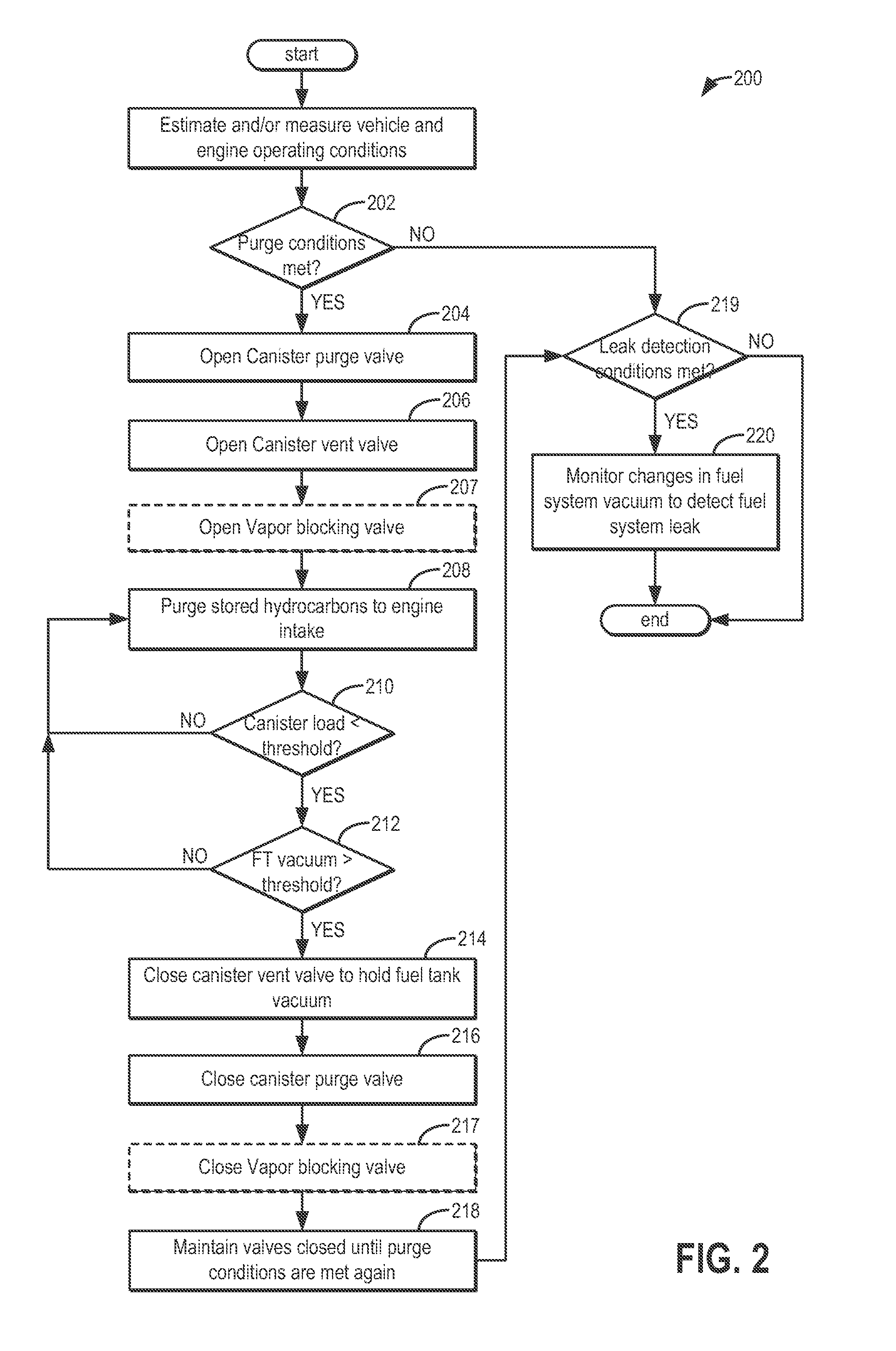Method and system for fuel system control
a fuel system and control system technology, applied in the direction of electric control, combustion air/fuel air treatment, machines/engines, etc., can solve the problems of tailpipe emissions, overall drivability, tailpipe emissions, tailpipe emissions, etc., to reduce fuel emissions, reduce engine operation times, and fuel economy
- Summary
- Abstract
- Description
- Claims
- Application Information
AI Technical Summary
Benefits of technology
Problems solved by technology
Method used
Image
Examples
Embodiment Construction
[0012]Methods and systems are provided for generating and maintaining at least some negative pressure in a fuel system coupled to a hybrid vehicle, such as the fuel system of FIG. 1. A controller may be configured to perform a control routine, such as the example routine of FIG. 2, to coordinate the closing of a canister vent valve before the closing of a canister purge valve when a purging operation is stopped to hold at least some vacuum in the fuel tank. Then, during a subsequent canister purge, the purge valve can be opened before opening the vent valve, allowing purge to initiate under fuel tank vacuum conditions. The controller may also perform leak detection tests during non-purging conditions while vacuum is held in the fuel system. An example fuel system operation is described at FIG. 3. In this way, purging and leak detection can be better completed during the limited purge time available in hybrid vehicles.
[0013]FIG. 1 shows a schematic depiction of a hybrid vehicle syste...
PUM
 Login to View More
Login to View More Abstract
Description
Claims
Application Information
 Login to View More
Login to View More - R&D
- Intellectual Property
- Life Sciences
- Materials
- Tech Scout
- Unparalleled Data Quality
- Higher Quality Content
- 60% Fewer Hallucinations
Browse by: Latest US Patents, China's latest patents, Technical Efficacy Thesaurus, Application Domain, Technology Topic, Popular Technical Reports.
© 2025 PatSnap. All rights reserved.Legal|Privacy policy|Modern Slavery Act Transparency Statement|Sitemap|About US| Contact US: help@patsnap.com



